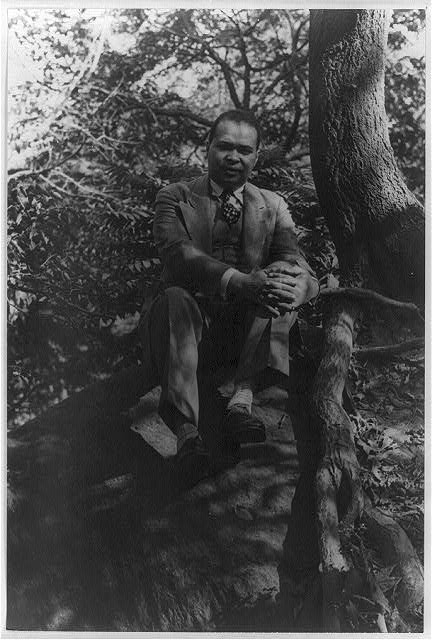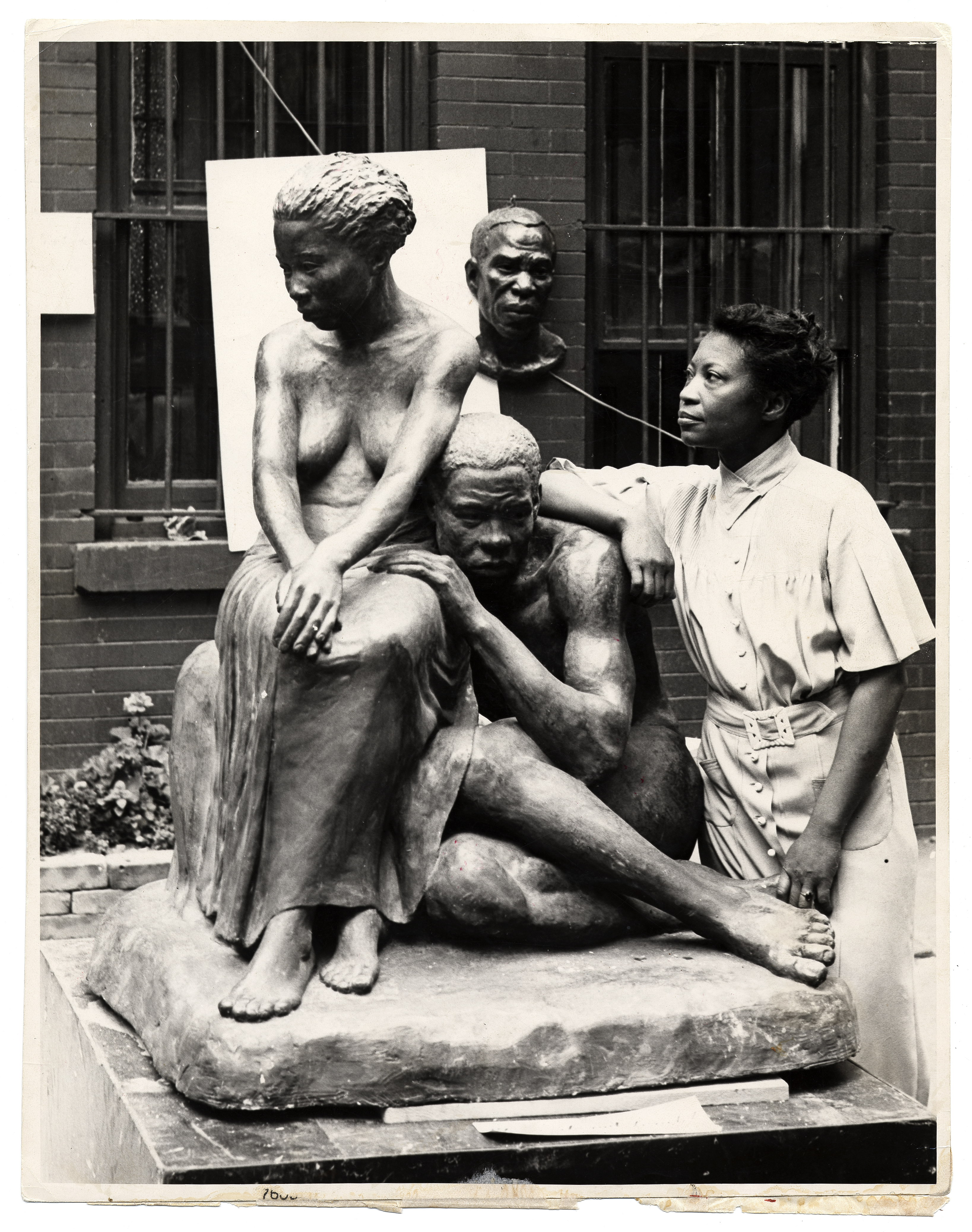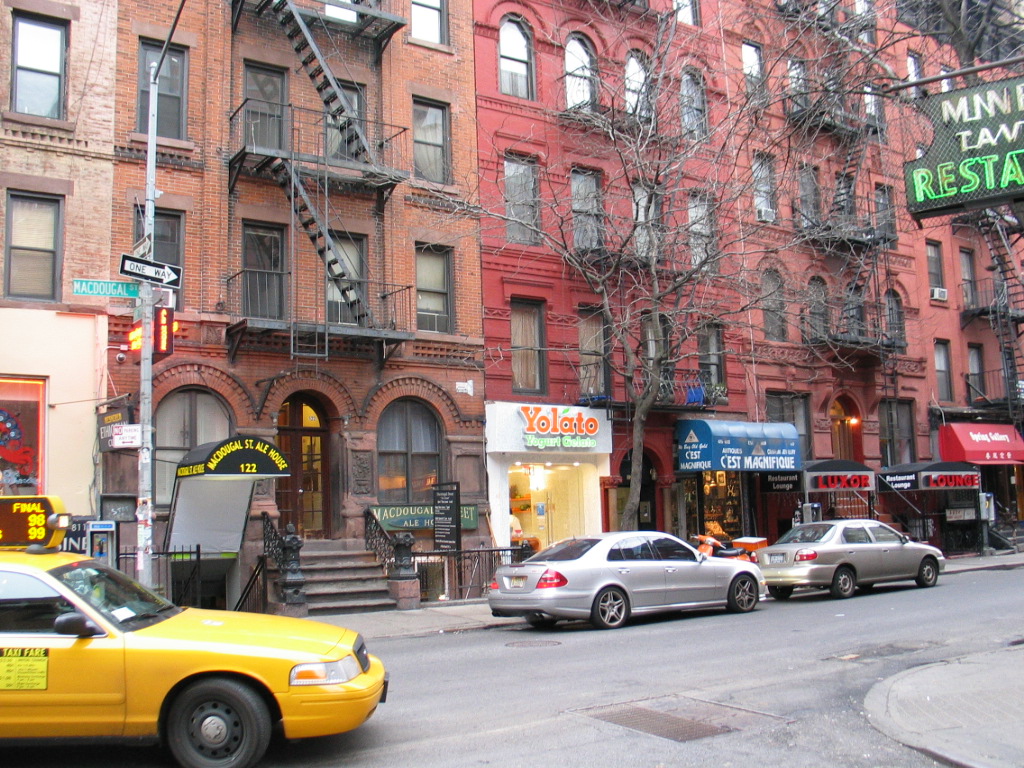|
Niggerati
The Niggerati was the name used, with deliberate irony, by Wallace Thurman for the group of young African-American artists and intellectuals of the Harlem Renaissance. "Niggerati" is a portmanteau of "nigger" and " literati". The rooming house where he lived, and where that group often met, was similarly christened Niggerati Manor. The group included Zora Neale Hurston, Langston Hughes, and several of the people behind Thurman's journal ''FIRE!!'' (which lasted for one issue in 1926), such as Richard Bruce Nugent (the associate editor of the journal), Jonathan Davis, Gwendolyn Bennett, and Aaron Douglas. The African-American bourgeoisie tried to distance itself from the slavery of the past and sought social equality and racial integration. The Niggerati themselves appeared to be relatively comfortable with their diversity of gender, skin color, and background. After producing ''FIRE!!'', which failed because of a lack of funding, Thurman persuaded the Niggerati to produc ... [...More Info...] [...Related Items...] OR: [Wikipedia] [Google] [Baidu] |
Wallace Thurman
Wallace Henry Thurman (August 16, 1902 – December 22, 1934) was an American novelist active during the Harlem Renaissance. He also wrote essays, worked as an editor, and was a publisher of short-lived newspapers and literary journals. He is best known for his novel '' The Blacker the Berry: A Novel of Negro Life'' (1929), which explores discrimination within the black community based on skin color, with lighter skin being more highly valued. Early life Thurman was born in Salt Lake City to Beulah and Oscar Thurman. When Thurman was less than a month old, his father abandoned his wife and son. It was not until Wallace was 30 years old that he met his father. Between his mother's many marriages, Wallace and his mother lived in Salt Lake City with Emma Jackson, his maternal grandmother. Jackson ran a saloon from her home, selling alcohol without a license."Wallace Thurman", in ''Encyclopedia of the Harlem Renaissance'', ed. by Aberjhani & Sandra West, pp. 328–330 Thurman's earl ... [...More Info...] [...Related Items...] OR: [Wikipedia] [Google] [Baidu] |
Richard Bruce Nugent
Richard Bruce Nugent (July 2, 1906 – May 27, 1987), aka Richard Bruce and Bruce Nugent, was a gay writer and painter in the Harlem Renaissance. Despite being a part of a group of many gay Harlem artists, Nugent was among only a few who were publicly out. Recognized initially for the few short stories and paintings that were published, Nugent had a long productive career bringing to light the creative process of gay and black culture. Biography Early life Richard Bruce Nugent was born in Washington, DC, on July 2, 1906, to Richard H. Nugent, Jr. and Pauline Minerva Bruce. He completed his schooling at Dunbar High School in 1920, and moved to New York following his father's death. After revealing to his mother that he decided to devote his life to only making art, she worried about his lack of interest in getting a stable job, so she sent him to Washington, DC, to live with his grandmother. To earn enough money to sustain the family, Nugent would pass as white to earn hig ... [...More Info...] [...Related Items...] OR: [Wikipedia] [Google] [Baidu] |
Harlem Renaissance
The Harlem Renaissance was an intellectual and cultural revival of African American music, dance, art, fashion, literature, theater, politics and scholarship centered in Harlem, Manhattan, New York City, spanning the 1920s and 1930s. At the time, it was known as the "New Negro Movement", named after '' The New Negro'', a 1925 anthology edited by Alain Locke. The movement also included the new African American cultural expressions across the urban areas in the Northeast and Midwest United States affected by a renewed militancy in the general struggle for civil rights, combined with the Great Migration of African American workers fleeing the racist conditions of the Jim Crow Deep South, as Harlem was the final destination of the largest number of those who migrated north. Though it was centered in the Harlem neighborhood, many francophone black writers from African and Caribbean colonies who lived in Paris were also influenced by the movement, which spanned from about 1918 u ... [...More Info...] [...Related Items...] OR: [Wikipedia] [Google] [Baidu] |
Zora Neale Hurston
Zora Neale Hurston (January 7, 1891 – January 28, 1960) was an American author, anthropologist, and filmmaker. She portrayed racial struggles in the early-1900s American South and published research on hoodoo. The most popular of her four novels is ''Their Eyes Were Watching God'', published in 1937. She also wrote more than 50 short stories, plays, and essays. Hurston was born in Notasulga, Alabama, and moved with her family to Eatonville, Florida, in 1894. She later used Eatonville as the setting for many of her stories. In her early career, Hurston conducted anthropological and ethnographic research while a student at Barnard College and Columbia University. She had an interest in African-American and Caribbean folklore, and how these contributed to the community's identity. She also wrote fiction about contemporary issues in the Black community and became a central figure of the Harlem Renaissance. Her short satires, drawing from the African-American experience and rac ... [...More Info...] [...Related Items...] OR: [Wikipedia] [Google] [Baidu] |
Theophilus Lewis
Theophilus Lewis (1891–1974) was an African-American drama critic, a writer, and a magazine editor during the Harlem Renaissance whose contributions primarily appeared in '' The Messenger'', the socialist African-American magazine founded by A. Philip Randolph and Chandler Owen. Lewis was well known for his staunch support of the advancement of a black aesthetic in the arts, particularly the advancement of plays that represented African-Americans well. Biography Born in Baltimore, Lewis idolized H. L. Mencken, the legendary newspaper writer, magazine editor, and literary critic who contributed to ''The Smart Set'', a magazine that Lewis read religiously. After returning from fighting in World War I, Lewis settled in New York with his family and began working for the Postal Service, a job Lewis held for 33 years and by which he supported his wife and three children. There he met Randolph and Owen and showed them one of his reviews of the local theater, and these men loved ... [...More Info...] [...Related Items...] OR: [Wikipedia] [Google] [Baidu] |
Valerie Boyd
Valerie Boyd (December 11, 1963 – February 12, 2022) was an American writer and academic. She was best known for her biography of Zora Neale Hurston entitled ''Wrapped in Rainbows: The Life of Zora Neale Hurston''. She was an associate professor and the Charlayne Hunter-Gault Distinguished Writer-in-Residence at the Grady College of Journalism and Mass Communication at the University of Georgia, where she taught narrative nonfiction writing, as well as arts and literary journalism. Early life Boyd was born in Atlanta, Georgia, on December 11, 1963. Her father operated a gas station and tire shop; her mother was a housewife. Boyd studied at Northwestern University's Medill School of Journalism, graduating with a Bachelor of Science in 1985. She subsequently undertook postgraduate studies at Goucher College, obtaining a Master of Fine Arts in creative nonfiction writing in 1999. Career Journalism Boyd first worked as a copy editor for the '' Atlanta Journal-Constitution'' ... [...More Info...] [...Related Items...] OR: [Wikipedia] [Google] [Baidu] |
Helene Johnson
Helene Johnson (July 7, 1906 – July 7, 1995) was an African-American poet during the Harlem Renaissance. She was also a cousin of writer Dorothy West. Career Johnson's literary career began when she won first prize in a short story competition sponsored by the ''Boston Chronicle''. She also received an honorable mention in a poetry contest organized by ''Opportunity'', the journal of the National Urban League that was a leading showcase for the talents of African-American artists. She reached the height of her popularity in 1927 when her poem "Bottled" was published in the May issue of '' Vanity Fair''. In 1935, Johnson’s last published poems appeared in ''Challenge: A Literary Quarterly''. She continued to write a poem a day for the rest of her life. Personal life Johnson, whose given name was Helen, spent her early years at her grandfather’s house in Boston. The rest of her formative years were spent in Brookline, Massachusetts. She and Dorothy West moved to Har ... [...More Info...] [...Related Items...] OR: [Wikipedia] [Google] [Baidu] |
Countee Cullen
Countee Cullen (born Countee LeRoy Porter; May 30, 1903 – January 9, 1946) was an American poet, novelist, children's writer, and playwright, particularly well known during the Harlem Renaissance. Early life Childhood Countee LeRoy Porter was born on May 30, 1903, to Elizabeth Thomas Lucas. Due to a lack of records of his early childhood, historians have had difficulty identifying his birthplace. Baltimore, Maryland, New York City, and Louisville, Kentucky have been cited as possibilities. Although Cullen claimed to be born in New York City, he also frequently referred to Louisville, Kentucky as his birthplace on legal applications. Cullen was brought to Harlem at the age of nine by Amanda Porter, believed to be his paternal grandmother, who cared for him until her death in 1917. Reverend Frederick A. Cullen, pastor of Salem Methodist Episcopal Church, Harlem's largest congregation, and his wife, the former Carolyn Belle Mitchell, adopted the 15-year-old Countee Porter, ... [...More Info...] [...Related Items...] OR: [Wikipedia] [Google] [Baidu] |
Augusta Savage
Augusta Savage (born Augusta Christine Fells; February 29, 1892 – March 27, 1962) was an American sculptor associated with the Harlem Renaissance. She was also a teacher whose studio was important to the careers of a generation of artists who would become nationally known. She worked for equal rights for African Americans in the arts. Early life Augusta Christine Fells was born in Green Cove Springs (near Jacksonville), Florida, on February 29, 1892, to Edward Fells, a Methodist minister, and Cornelia Murphy. Augusta began making figures as a child, mostly small animals out of the natural red clay of her hometown. Her father was a poor Methodist minister who strongly opposed his daughter's early interest in art. "My father licked me four or five times a week," Savage once recalled, "and almost whipped all the art out of me." This was because he believed her sculpture to be a sinful practice, due to his interpretation of the "graven images" portion of the Bible. She persevered, ... [...More Info...] [...Related Items...] OR: [Wikipedia] [Google] [Baidu] |
Dorothy West
Dorothy West (June 2, 1907 – August 16, 1998) was an American storyteller and short story writer during the time of the Harlem Renaissance. She is best known for her 1948 novel '' The Living Is Easy'', as well as many other short stories and essays, about the life of an upper-class black family. Early years Dorothy West was born in Boston, Massachusetts, on June 2, 1907, the only child of Virginian Isaac Christopher West, who was enslaved at birth and became a successful businessman, and Rachel Pease Benson of Camden, South Carolina, one of 22 children. The poet Helene Johnson was her cousin. Late in life she wrote that in Boston Blacks "were taught very young to take the white man in stride or drown in their own despair". She detailed how her mother guided her and her many cousins, all with varied skin tones, into the inhospitable world: West reportedly wrote her first story at the age of seven. Her first published work, a short story entitled "Promise and Fulfillment", ... [...More Info...] [...Related Items...] OR: [Wikipedia] [Google] [Baidu] |
Greenwich Village
Greenwich Village ( , , ) is a neighborhood on the west side of Lower Manhattan in New York City, bounded by 14th Street to the north, Broadway to the east, Houston Street to the south, and the Hudson River to the west. Greenwich Village also contains several subsections, including the West Village west of Seventh Avenue and the Meatpacking District in the northwest corner of Greenwich Village. Its name comes from , Dutch for "Green District". In the 20th century, Greenwich Village was known as an artists' haven, the bohemian capital, the cradle of the modern LGBT movement, and the East Coast birthplace of both the Beat and '60s counterculture movements. Greenwich Village contains Washington Square Park, as well as two of New York City's private colleges, New York University (NYU) and The New School. Greenwich Village is part of Manhattan Community District 2, and is patrolled by the 6th Precinct of the New York City Police Department. Greenwich Village has underg ... [...More Info...] [...Related Items...] OR: [Wikipedia] [Google] [Baidu] |




.jpg)
